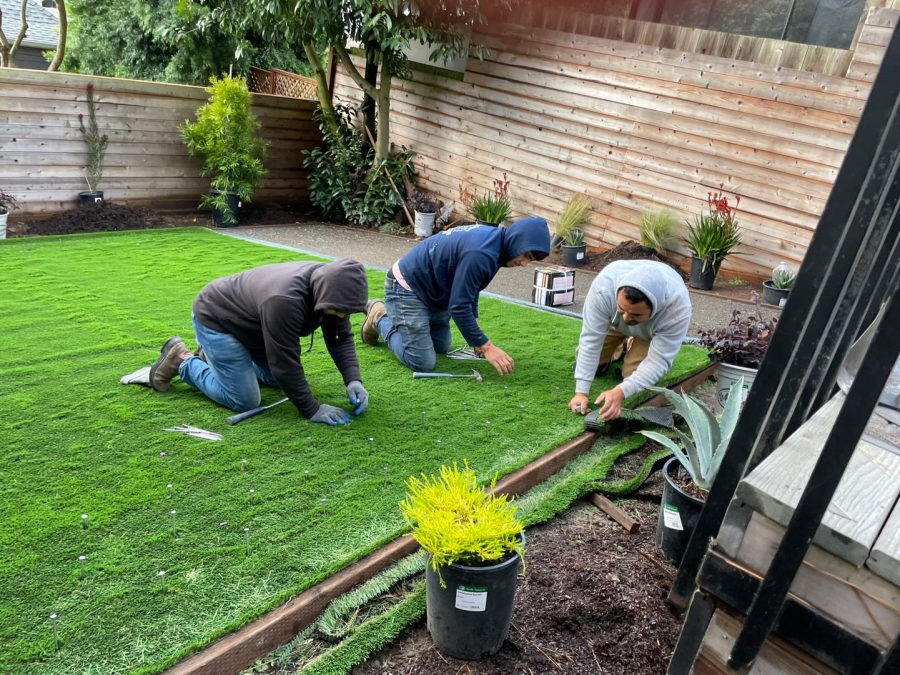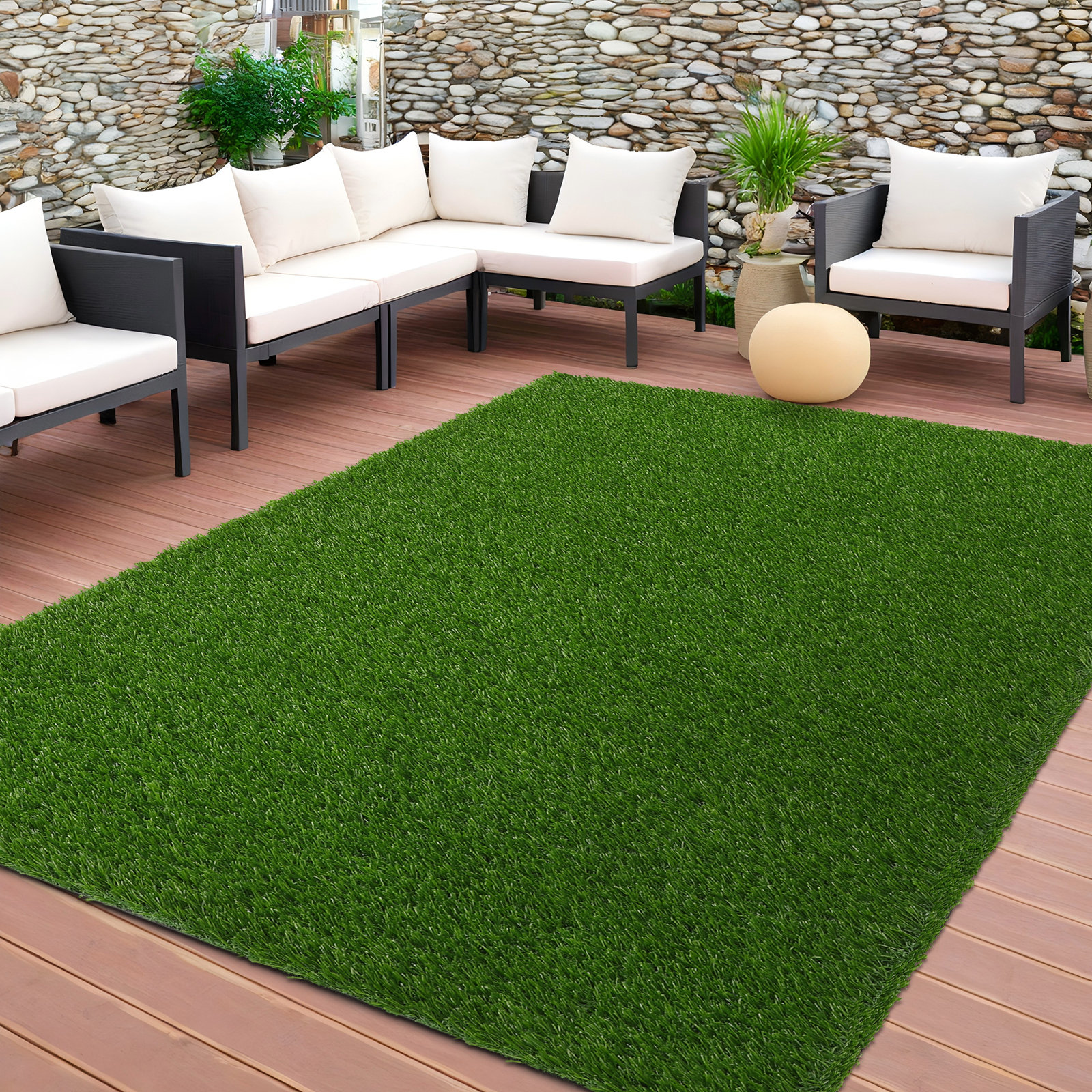Premium Arizona Turf Installation Services for Homes and Businesses
Premium Arizona Turf Installation Services for Homes and Businesses
Blog Article
Delve Into the Environmental Conveniences of Opting for Synthetic Grass Solutions
The adoption of artificial turf options presents a compelling chance to resolve pushing environmental obstacles. By considerably minimizing water usage and minimizing the application of hazardous chemicals, these alternatives not only promote lasting landscaping but additionally shield regional communities.
Water Preservation Conveniences
One of the most substantial benefits of man-made lawn is its capability to save water. In contrast, synthetic lawn does not require watering, significantly lowering the general demand for water sources.
By removing the requirement for routine watering, synthetic grass contributes to sustainable landscape techniques and aids alleviate the ecological impact of extreme water usage. The preservation of water extends to the decrease of runoff, which can lead to dirt disintegration and waterway pollution.
In addition, the setup of synthetic lawn enables districts and property owners to designate water resources a lot more successfully, concentrating on vital usages such as drinking water and farming. The shift towards synthetic grass not just advertises liable water usage yet also lines up with more comprehensive environmental goals focused on maintaining natural deposits.
As areas significantly focus on sustainability, the water preservation benefits of synthetic grass present a compelling situation for its adoption in property and business landscape design tasks.
Lowered Chemical Usage
The change to synthetic lawn significantly reduces the dependence on chemical therapies typically made use of in all-natural yard maintenance. Traditional grass monitoring commonly entails the application of fertilizers, pesticides, and herbicides to advertise development and control insects. These chemicals can pose threats to human wellness, neighborhood wildlife, and the atmosphere, adding to dirt and water contamination.
In comparison, artificial lawn removes the need for these damaging substances. By minimizing the launch of artificial compounds into the environment, man-made turf promotes much healthier dirt and water systems.
Moreover, the lack of chemical overflow related to synthetic grass installments assists secure local waterways from air pollution, sustaining aquatic life and maintaining biodiversity. Artificial turf companies phoenix. As communities progressively focus on lasting techniques, choosing synthetic grass presents a viable solution that lines up with environmental preservation objectives. Via this change, homeowner can appreciate lavish eco-friendly areas without endangering environmental health and wellness, paving the way for an extra sustainable future
Reduced Carbon Footprint

Moreover, the installment of man-made grass can lead to considerable water conservation. All-natural yards need significant quantities of water for irrigation, which not just adds to the carbon footprint connected with water Related Site removal and therapy yet likewise stress neighborhood water resources. On the other hand, artificial turf requires marginal upkeep, needing no watering, consequently significantly minimizing water usage and its connected power prices.
Furthermore, the durability of synthetic turf contributes to its decreased carbon effect. With a life-span of as much as 15 years or more, the requirement for regular substitutes is reduced, leading to much less waste and lower power usage in manufacturing and dealing with typical turf choices. In general, synthetic grass offers a sustainable alternative for ecologically conscious landscape design.
Habitat Preservation
Environment preservation is an essential factor to consider in the argument over landscaping options, specifically when comparing synthetic grass to all-natural lawn. Natural lawn lawns typically require comprehensive maintenance, consisting of using herbicides, fertilizers, and pesticides, which can negatively affect neighborhood environments. These chemicals can leach into the soil and rivers, damaging indigenous plants and animals and interrupting local environments.
Synthetic grass removes the need for harmful chemicals, thereby shielding nearby wild animals and maintaining the integrity of bordering environments. The installation of synthetic turf can lead to the conversion of former grass locations right into even more biodiverse landscapes, such as pollinator yards or native plant locations, which can support local wild animals.
Eventually, the shift to man-made visit our website lawn not just conserves water and lowers upkeep efforts yet additionally cultivates a much more harmonious relationship in between human activities and the natural surroundings, promoting environment conservation while doing so.
Long-Term Sustainability
Long-term sustainability is a crucial variable in reviewing the advantages of synthetic grass over standard yard lawns. One of the most considerable benefits of synthetic grass is its longevity; it can last as much as 15-20 years with minimal upkeep, whereas all-natural grass calls for regular reseeding and replacement. This long life decreases the demand for constant sources, such as water, fertilizers, and chemicals, which are vital for keeping a healthy yard yard.
Furthermore, synthetic grass contributes to a reduction in carbon discharges linked with lawn treatment equipment. Conventional yards commonly require gas-powered mowers, leaners, and blowers, every one of which add to air pollution. Artificial turf companies phoenix. On the other hand, synthetic grass eliminates the need for such devices, advertising a cleaner environment
Additionally, the production of fabricated grass significantly utilizes recycled materials, boosting its sustainability account. As manufacturers take on environment-friendly methods, the environmental impact of synthetic turf proceeds to diminish.

Final Thought
The fostering of artificial lawn services presents substantial environmental advantages, including significant water preservation, reduced reliance on unsafe chemicals, and a lower carbon impact. Synthetic lawn aids in preserving natural habitats by reducing land disturbance and advertising long-lasting sustainability with the original site usage of long lasting materials. Collectively, these variables underscore the possibility of artificial grass to add positively to environmental health and wellness and provide a viable choice to traditional landscaping methods in an increasingly resource-conscious globe.
In comparison, synthetic grass does not need watering, significantly lowering the overall demand for water sources. By reducing the release of synthetic compounds into the environment, fabricated lawn promotes much healthier soil and water systems.
Moreover, the setup of fabricated lawn can result in considerable water conservation. In contrast, man-made grass requires very little maintenance, requiring no watering, thereby considerably reducing water usage and its connected power expenses.

Report this page